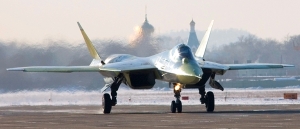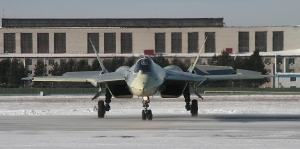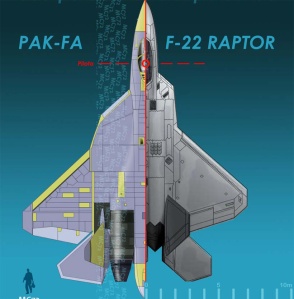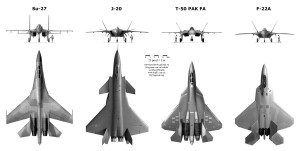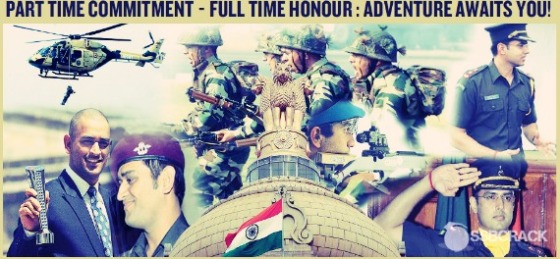MARCOS (previously named as Marine Commando Force (MCF)) is an elite special operations unit of the Indian Navy. created for conducting special operations such as Amphibious warfare, Counter-terrorism, Direct action, Special reconnaissance, Unconventional warfare, hostage rescue, Personnel recovery, Asymmetric warfare, Counterproliferation. The MCF is specially organised, trained and equipped for the conduct of special operations in a maritime environment. MARCOS is short for Marine Commandos. The force has gradually acquired experience and a reputation for professionalism over the two decades it has been in existence. Now it is one of the finest Special Forces units in the world and among the few units qualified to jump in the water with a full combat load. The MARCOS are capable of undertaking operations in all types of terrain, but are specialised in maritime operations in Jammu and Kashmir through the Jhelum River and Wular Lake, a 65 square kilometer freshwater lake. Some MARCOS personnel are also attached with the Army special forces units conducting counter-terrorism operations in the area. MARCOS are widely feared among the terrorists, who call them “Dadiwala fauj”, meaning the “Bearded army” because of their bearded disguise in civil areas. MARCOS have also been known to carry out wide variety of operations in foreign soil.
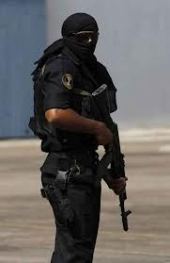
MACROS (INDIA)
| Active |
1987 – present |
| Country |
 India India |
| Branch |
 Navy Navy |
| Type |
Special Operations Forces |
| Role |
Primary tasks:
- Amphibious warfare
- Counter-terrorism
- Direct action
- Special reconnaissance
- Unconventional warfare
- Personnel recovery
- Asymmetric warfare
- Counterproliferation
- hostage rescue
- Foreign internal defence
Other roles:
- Hydrographic reconnaissance
|
| Size |
Classified |
| Regimental Centre |
Mumbai, Visakhapatnam, Goa, Kochiand Port Blair. |
| Nickname |
Magarmach (Crocodiles) |
| Motto |
“The few the fearless” |
| Anniversaries |
14 February. |
| Engagements |
Operation Cactus,
Operation Leech,
Operation Pawan,
Kargil War,
Operation Black Tornado,
Operation Cyclone,
Counter-terrorist operation in Kashmir. |
History of MARCOS
The Indian Armed Forces wanted to establish an amphibious warfare and maritime special operations force. During the Indo-Pakistani War of 1971, the Indian Navy supported the landing operations against the Pakistani base of Cox Bazar, Operation Jackpot, landing an army brigade using Polnochny class landing ships without significant resistance. Before this operation, Indian navy divers provided basic training in underwater demolition to Bengali insurgents. However, this did not yield expected results. Later, different Indian army units were assigned amphibious roles in exercises. In 1983, the 340th Army Independent Brigade based at Trivandrum, was converted to an amphibious assault unit. Since then, the navy has conducted various exercises to demonstrate its amphibious abilities, notably the Andaman Islands in 1984, and Goa in 1986. These assault operations included both airborne and amphibious forces. In April 1986, the Indian Navy started planning for a maritime special force which could conduct amphibious reconnaissance, raids and counter-terrorist operations.
The force was initially trained by the other special forces of the country, including those under the Home Ministry and the Army. Three officers were then sent to undergo a hard training schedule with US Navy SEALs and further training was then acquired through exchanges with the British Special Air Service. The officers formed the first nucleus of the Indian Marine Special Force (IMSF) which was officially established in February 1987. The first batch of marine commandos qualified in February 1987. It was later renamed as the Marine Commando Force (MCF) in 1991.
SELECTION AND TRAINING
All MARCOS personnel are male, selected from Indian navy. They are selected when they are young, in the early 20s and have to go through a very stringent selection process and training. The selection standards are extremely high. The training is a continuous process. American and British special forces assisted in the initial training, which now consists of a two-year course for new recruits. The training regiment includes: airborne operations, combat diving courses, counter-terrorist, anti-hijacking, anti-piracy operations, Direct action, Infiltration and Exfiltration tactics, Special reconnaissance, Unconventional warfare training etc. Majority of the training is conducted at INS Abhimanyu which is also the home base of MARCOS.
A significant amount of the training that US Navy SEALS undergo has been replicated in the training of Marcos. Generally, the pre-training selection process is made of two parts. Any Indian Navy personnel who wants to join this outfit must first undergo a three-day long, physical fitness test and aptitude test. Within this process, 80% of the application are screened out. Further screening process is known as ‘hell’s week’. This is actually a five-week long process which involves high degree of physical exercises and sleep deprivation. It is only after this process that actual training begins.
The MARCOS are trained in every kind of weapon and instruments, from knives and crossbows to sniper rifles, handguns, assault rifles, submachine guns and bare hands. Being divers, they can reach hostile shores swimming underwater.
The further training includes:
- Open and closed circuit diving
- Basic commando skills including advanced weapon skills, demolitions, endurance training and martial arts
- Para training
- Intelligence training
- Operation of submersible craft
- Offshore operations
- Anti-terrorism operations
- Operations from submarines
- Skydiving
- Various special skills such as language training, insertion methods, etc.
- Explosive ordnance disposal techniques
OPERATION BASE
The MCF currently operates out of the naval bases at Mumbai, Visakhapatnam, Goa, Kochi and Port Blair. There are plans to shift the current training facility at the Naval Special Warfare Training and Tactical Centre to a new facility to be set up at the erstwhile Naval Academy in Goa.
FUTURE DEVELOPMENTS
To strengthen its capabilities to carry out special operations, the Navy is planning to procure advanced Integrated Combat System (ICS) for the MARCOS. The Navy wants the ICS for effective command, control and information sharing to maximise capabilities of individuals and groups of the MARCOS while engaging enemies.
The ICS will provide enhanced capabilities such as tactical awareness, ability to fight in hostile environment and can enable Group Commanders to remotely monitor and control operations. It would help in integrating an individual sailor’s capability of day and night surveillance, ballistic protection, communication and firepower through an integrated network at individual and group level. Initiating the procurement process through a Request for Information (RFI), Navy’s Directorate of Special Operations and Diving has sought details from global vendors about the ICS, which should have gear for both individual and group uses.
The individual equipment required by the Navy in the ICS includes light weight helmets, head-mounted displays, tactical and soft ballistic vests along with communication equipment. The group-level gear requirements include command and control and surveillance systems along with high speed communication equipment. The devices would have sight for the sniper, laser range finder and long range thermal imager (medium and long range) and near IR laser pointer for a combat group to undertake surveillance, reconnaissance and targeting. The ICS would be compatible with the assault rifles and close-quarter combat weapons. The Navy has recently started inducting the Israeli IMI Tavor TAR-21 for the MARCOS.
